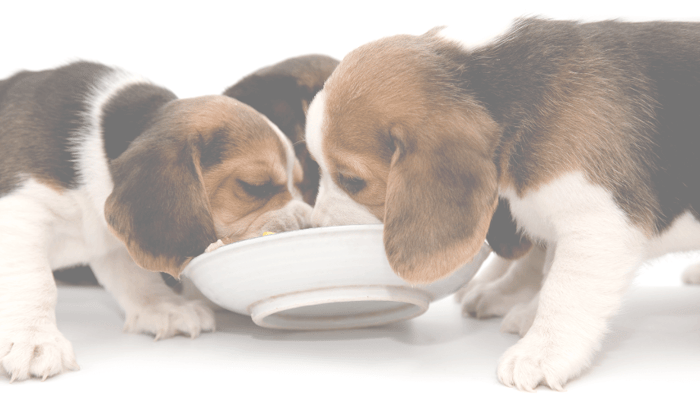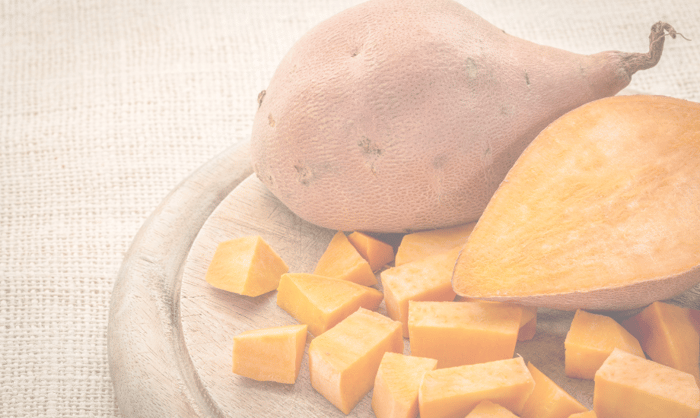Table of Contents
Summary ✍️
Raising a puppy is an exciting adventure, but it also comes with its challenges – especially when it comes to feeding. From picking the right food to figuring out portion sizes and schedules, it's important to get it just right to ensure your puppy's healthy growth. This Puppy Feeding Guide will cover everything you need to know, from selecting the best puppy food to establishing feeding routines and introducing treats, along with expert advice on puppy nutrition.
Key Takeaways 🔑
Picking the right food is essential for your puppy's development, so look for high-quality, natural ingredients.
Treats can be great for training, but be cautious about which treats you choose and how often you give them to your pup.
Feeding schedules and portion sizes depend on your puppy’s age, weight, and breed.
Consistent feeding times help build good habits and improve digestion.
Slow-feeder bowls can help prevent overeating and encourage a healthy eating pace.
Take Healthybud’s Dog Food Feeding Guide Quiz or grab the Perfect Puppy Bundle to make puppy feeding easier!
Puppy Feeding 101 🐶
If you've ever brought home a puppy, you know how tiny (and adorable!) they are. But you also know how quickly they grow. With so many changes happening fast, it can be tricky to know how to feed them just right. Not enough? Too much? What kind? How often?
The good news is, with the right guidance, you can easily find a feeding routine that works for both you and your puppy. Understanding their nutritional needs and creating a consistent feeding schedule will help ensure they grow strong and healthy. With a bit of planning (and some help from this Puppy Feeding Guide), you’ll have your puppy thriving in no time!
What To Feed Puppies 🍽️
Just as babies have different nutritional needs than older children or adults, puppies have different ones than adult dogs. Foods made with puppies in mind offer the best balance of nutrients to fuel their growing bodies.
When choosing puppy food, always look for high-quality, natural ingredients. These will help set your pup up for a healthy start in life. Healthybud’s Meal Bites or Dinner Patties are great options to consider. They’re all-natural and fully balanced with 90% real meat & organs, 10% veggies, fruits & superfood. Plus, they can continue to be used as your pup ages.
Most dogs reach maturity between one and two years old, but for tailored advice specific to your pup’s growth, always consult your vet.
Choosing Puppy Treats 🦴
Treats should only make up a small part of your puppy’s diet to ensure they’re getting the essential nutrients they need from their meals. But you can definitely give your puppy healthy treats! They’re not only a tasty snack, but also an excellent tool for training.
Healthybud’s Single-Ingredient Treats are a great choice for puppies — they have lots of flavour and nutrients, but minimal ingredients, which helps you introduce new foods one at a time and mitigate the risk of allergic reactions.
Since puppies can often have sensitive tummies, Healthybud’s Turkey Gut Booster is a soothing option to support their digestion while treating them to something yummy. Winner of 'Health-Focused Dog Treat of the Year' (2022), these soft, chewy, superfood-packed treats are specially formulated to boost gut health while managing upset stomachs, loose stools, and scooting.
If you're training your puppy, Healthybud’s Mini Training Treats are small, bite-sized, and perfect for rewarding your pup during sessions. Made with natural, high-quality ingredients, these treats help your puppy stay engaged without disrupting their main meals. Plus, they contain brain-boosting ingredients like Lion's Mane, Reishi, and Salmon Oil to support cognitive development. They’re also easy to carry around, so you can bring them along for walks, trips, or any training on the go!
#ProTip #TrainingHack: You can also use Healthybud Freeze-Dried Meal Bites as training treats — they’re formulated to be fully-balanced meals, so just adjust the portion at mealtime!
How Much to Feed Puppies ⚖️
Puppies should start eating puppy food once they’re weaned, which usually happens between 6-8 weeks old. The amount you feed your puppy depends on their estimated weight at maturity. For example, a Labrador Retriever puppy will need more food than a Pomeranian puppy due to the difference in their size.
The packaging of your puppy's food will have guidelines on how much to feed, but keep in mind that these can vary based on the food type, serving size, and formulation. If you’re unsure how much is appropriate, or if you're not sure how big your dog will get (especially if they’re a mixed breed or an unknown breed), it’s always a good idea to consult your vet for personalized advice.
General Feeding Guidelines for Puppies
Puppy Weight (Adult Estimate) | Daily Food Amount |
5-10 lbs | ½ - 1 cup |
10-20 lbs | 1 - 2 cups |
20-50 lbs | 2 - 4 cups |
50+ lbs | 4+ cups |
Note: This is a general puppy feeding guide and varies based on food type and your pup’s activity level.
How Often to Feed Puppies ⏰
To create a feeding schedule for your pup, divide the total amount they should eat each day by two or three meals, depending on how often you plan to feed them.
If you aren’t sure when to feed, consider syncing mealtimes with your own — your puppy can have breakfast, lunch, and dinner just like you! Keeping mealtimes consistent will help establish a routine, which is great for your pup's digestion and overall behaviour.
To avoid nighttime accidents, aim to give your puppy their last meal a few hours before bedtime. This gives their body time to digest before sleep.
Expert Advice: “What should I do if my puppy is eating too fast?” 👀
Is your puppy gobbling down food like there’s no tomorrow? Don’t worry – it’s pretty common, and there are solutions!
According to the Bayside Animal Hospital, “Puppies get excited over pretty much everything, and a bowl of food is no exception!” However, there are several reasons why your puppy might be eating too quickly. For instance, they may have come from a large litter where they had to compete with other dogs for food, or their diet might not be sufficiently well-balanced.
Start by scheduling an appointment with your vet to rule out any underlying health issues, like worms, that could be making your puppy ravenous. You should also discuss whether their current diet is meeting their nutritional needs.
Once that’s sorted, try these vet-approved tips to slow down your puppy’s eating:
- Use a slow feeder bowl: Slow feeder bowls or food puzzles can help your puppy eat slower by making them work for their food, preventing them from taking down big gulps at a time. These types of feeders also provide mental and physical enrichment. For a no-cost solution, try spreading your puppy’s food out across a sheet pan, or putting it in a muffin tin! This forces your puppy to take tiny bites and use their tongue to pick up smaller pieces, which slows them down. You can break food into smaller portions by putting a little bit into each cup in a muffin pan.
- Serve smaller meals: Instead of offering one to three large meals, divide your puppy’s daily food intake into smaller portions and feed them several times a day. This can help manage hunger and reduce their urge to gobble.
- Hand-feed your pup: If you have time, hand-feeding your puppy until they outgrow their fast eating habit can be a valuable bonding experience. Plus, it gives you better control over the pace at which they eat.
Puppy Feeding Guide FAQs 🤔
🎾 Can I switch my puppy’s food?
🐾 Yes, but it’s important to do it gradually to avoid digestive upset. Mix increasing amounts of the new food with the old food over a 7-10 day period.
🎾 How do I know if I’m overfeeding my puppy?
🐾 Watch for signs like excessive weight gain, lethargy, or digestive issues. Adjust portions if needed and consult your vet.
🎾 When can I switch to adult food?
🐾 Most dogs can switch to adult food around 12-18 months, but it depends on your puppy's breed and growth rate. Your vet can help determine the best time for your pup.
🎾 What are some common issues my puppy may face?
Puppies often experience digestive issues as their gut develops and they try new foods. They may also face teething pain, allergies, separation anxiety, and potty training challenges. Keep an eye on their behaviour, and if you're concerned, reach out to your vet. For a gut-soothing treat, Healthybud’s Turkey Gut Booster treats are formulated to support healthier digestion and better stool.
Turkey Gut Booster

$15.00 CAD
Award-winning soft treat & topper with prebiotics for digestion … read more
How to Keep Puppy Nutrition Simple 🩵
If you want to keep things simple and ensure your puppy gets the best start, Healthybud has you covered.
For starters, you can take our quick Dog Feeding Guide Quiz to get personalized recommendations based on your pup’s needs. Answer a few short questions and instantly receive your own custom Feeding Guide detailing which products are best for your furbaby, and how much to feed them, so your puppy gets the perfect portion every time!
We’ve also curated the Perfect Puppy Bundle (also known as the Small Breed Bundle), designed specifically for small pups, picky eaters, and those with sensitive tummies. This bundle includes everything your puppy needs to thrive:
1 x Freeze-Dried Beef Patties (14oz)
1 x Beef Mini Training Treats (6.5oz)
1 x Turkey Gut Booster (4.6oz)
1 x Sweet Potato Chews (5.6oz)
Feeding your puppy has never been easier or more nutritious!
Conclusion 🌟
Feeding your puppy the right food at the right time is essential for their growth and development. By selecting high-quality food, sticking to a consistent feeding schedule, and using healthy treats in moderation, you’re setting your puppy up for a long, happy, and healthy life.
For a simple solution, try Healthybud’s Dog Food Feeding Guide Quiz or the Perfect Puppy Bundle to ensure you're giving your puppy the best start.
Beef Mini Training Treats

$17.00 CAD
The first 1-calorie superfood training treat for dogs … read more
🚨 Special Promo Alert!
As a thank you for reading our blog, enjoy a 15% discount on all Healthybud products! Use code BLOG15 at checkout.








